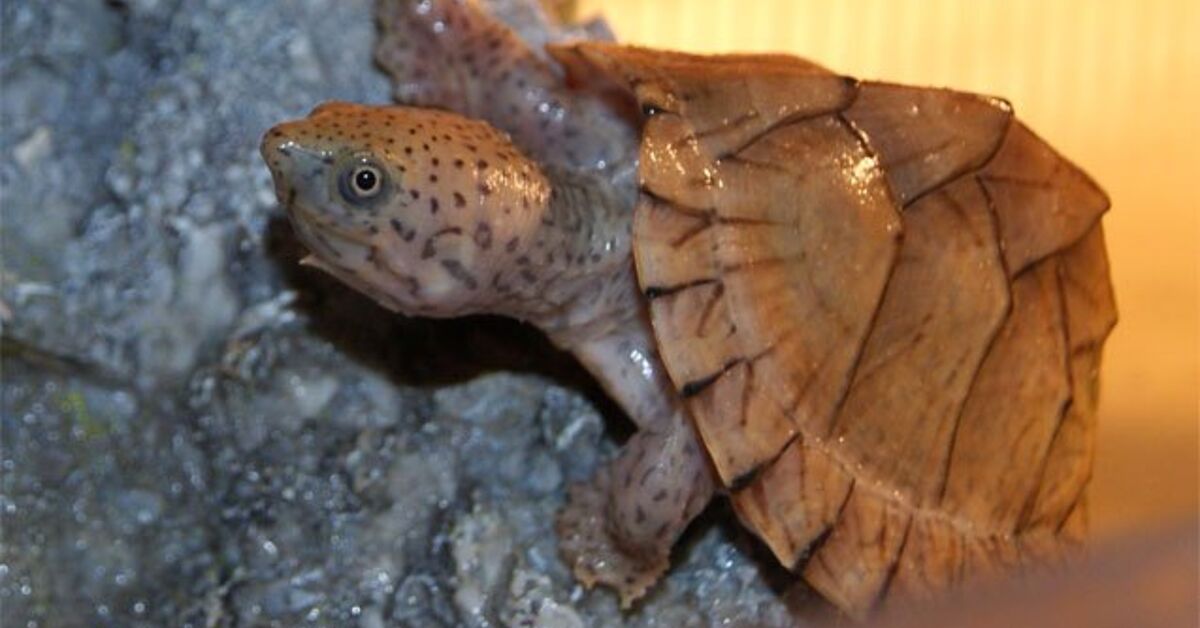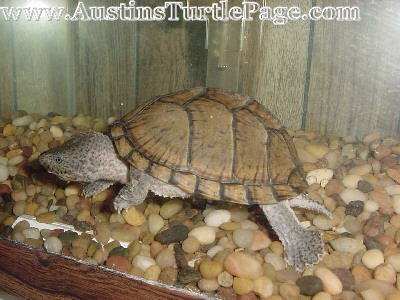When it comes to keeping pet turtles, it’s essential to understand how big they can potentially grow. One popular turtle species for enthusiasts is the Razorback Musk Turtle. Also known as the Common Musk Turtle or the Stinkpot, these small reptiles can make fascinating pets, but it’s crucial to have an idea of their full-grown size before bringing one home.
Overview of the Razorback Musk Turtle
The Razorback Musk Turtle (Sternotherus carinatus) is native to the southeastern United States and is named after the prominent keel, or ridge, down its back. These turtles are known for their muscular appearance and unique defensive odor, secreting a foul-smelling substance when threatened, which gives them their Stinkpot nickname.
Razorback Musk Turtles have a dark brown or black shell, with some individuals displaying yellow or orange markings. As adults, they have a characteristic long tail, often exceeding the length of their shell. Additionally, these turtles have small, webbed feet and a pointed snout.
Size and Growth Rate
Understanding the potential size of a Razorback Musk Turtle helps pet owners create appropriate habitats and ensure their turtle’s needs are met. Like most turtles, Razorbacks experience rapid growth during their early years and eventually slow down as they reach adulthood.
On average, a Razorback Musk Turtle grows to be around 3-5 inches in shell length as adults. However, there have been reports of some individuals reaching up to 6 inches in exceptional cases. Males tend to be smaller than females, with their shells measuring around 3-4 inches, while females can grow up to 5-6 inches.
It’s important to note that size can also be influenced by various factors, including genetics, diet, and environmental conditions. Optimal nutrition and providing a well-maintained tank are crucial for the healthy growth of Razorback Musk Turtles.
Age And Lifespan
Razorback Musk Turtles have an average lifespan of 20-30 years in captivity, with some individuals living even longer with proper care. Their longevity means they can become lifelong companions, so it’s important to be prepared for the commitment before bringing one into your home.

Credit: www.petguide.com
Creating an Appropriate Habitat
To ensure the well-being and healthy growth of your Razorback Musk Turtle, it’s essential to provide an appropriate habitat that mimics their natural environment. Here are a few key points to consider:
Tank Size And Setup
When setting up a tank for your Razorback Musk Turtle, the general rule of thumb is to provide at least 10 gallons of water per inch of shell length. Since these turtles grow to be 3-5 inches in size, a 30-50-gallon aquarium is typically recommended for one adult turtle. However, providing a larger tank offers more swimming space and allows for the addition of tank mates if desired.
The tank should be equipped with a basking area, as well as a UVB light to provide the necessary heat and ultraviolet light for the turtle’s well-being. A filtration system is also essential to maintain water quality, as these turtles can be messy eaters.
Water Quality And Temperature
Razorback Musk Turtles thrive in warm, clean water. The water temperature should be maintained at around 75-80 degrees Fahrenheit (24-27 degrees Celsius) using an aquarium heater and monitored with a thermometer. Additionally, a water pH level of 6-8 is suitable for these turtles.
Weekly water changes of around 25% are recommended to keep the tank clean, and a water conditioner should be used to remove chlorine and other harmful substances from tap water.
Proper Diet And Nutrition
A well-balanced diet is crucial for the healthy growth of Razorback Musk Turtles. As omnivores, they require a combination of animal protein and plant matter. Commercial turtle pellets can serve as the primary staple, supplemented with live or frozen protein sources such as insects, small fish, and earthworms.
Fresh leafy greens and fruits should also be offered regularly to ensure a varied and balanced diet. Providing calcium and vitamin supplements, such as those formulated specifically for turtles, can help prevent nutrient deficiencies and promote healthy shell growth.

Credit: en.wikipedia.org
Conclusion
Razorback Musk Turtles are small, unique reptiles that make captivating pets. Understanding their growth potential is important for providing suitable care and creating an optimal habitat. With their average adult size ranging from 3-5 inches, these turtles can fit comfortably in a spacious tank while offering plenty of opportunities to observe their intriguing behaviors.
By creating the right environment, offering a balanced diet, and providing proper care, you can ensure your Razorback Musk Turtle thrives and enjoys a long and healthy life as your delightful companion.






Leave a Reply